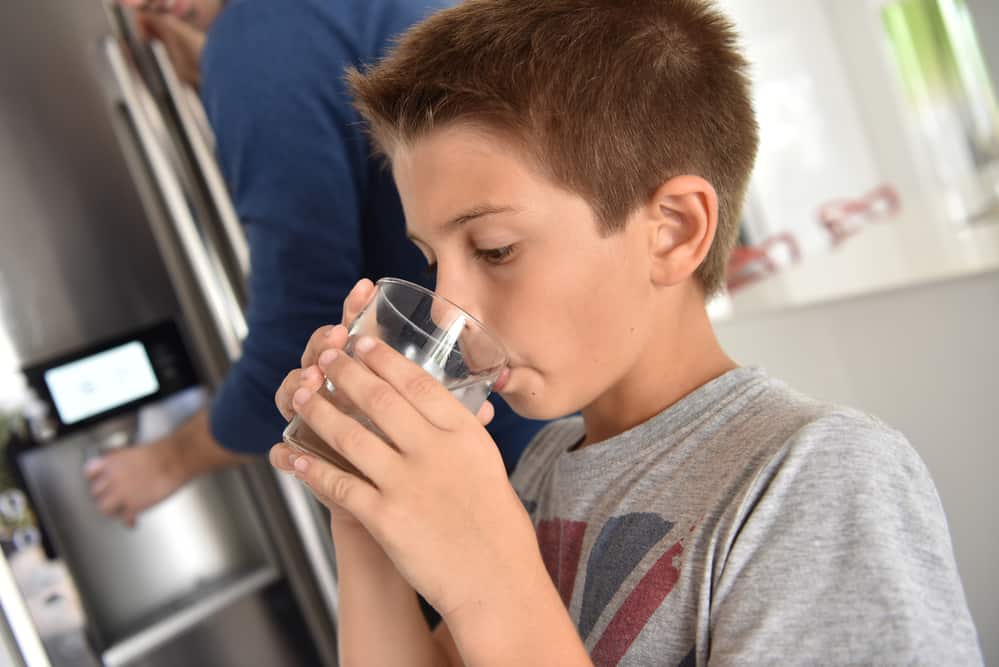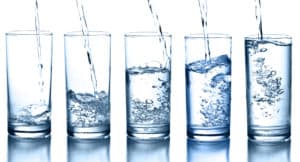We like to share product recommendations with you and hope you like them! Just to make you aware Water Filter Data may collect a small share of sales or other compensation from the links on this page.
If you’re into water softeners and really care about the size you need to purchase for your specific needs you can find many sizing tools online that can help you pick. However, these tools do not incorporate the softener’s efficiency into the calculation.
Sometimes your choice can bring you to a proper size, but then if you take a look at the salt consumption you can be sure you were wrong. How to size a water softener for your home for only 300 pounds per year? The reason this happens is that many internet-based “experts” and in-store ones do not understand how important salt efficiency really is and do not even include this data in the sizing model. So doing some math will help you size your water softener.
Do the math
People in family X 75 gallons per person X (GPG HARDNESS + IRON) = Grains that must be removed.
Take the number of people in your family, multiply that by 75 gallons pers person then multiply that with the combined GPG Hardness and Iron. The result will give you the total grains per day that must be removed.
Feel free to use this calculator to check what you personally need.
Example:
Lets say that you have 5 people in your home and 10 grains per gallon hardness.
5 people X 70 gpd = 350 total gpd
350 gpd X 10 grains = 3500 grains per day
- 1 cubic ft. @ 24,000 grains / 3500 = 6.8 days between regenerations
- 1.5 cubic ft. @ 32,000 grains / 3500 = 9 days between regenerations
- 2.0 cubic ft. @ 40,000 grains / 3500 = 11 days between regenerations
The best choice would be the 1 cubic foot unit (closest to 7 days). Read below about regeneration cycles.
Most probably you need this size

In general, many homes need a 32,000-grain water softener unit or one cubic foot of resin.
But if you have 6 or more family members or are in a large house with more than 4000 square feet, or your water hardness exceeds the 15 grains then you’ll need a bigger water softener. Keep the softener’s regeneration in mind.
Regeneration
Regeneration is the process when your softener flushes the resin beads to get rid of built-up minerals.
This process can take up to 90 minutes. It is key for a water softener’s proper function.
Without it, the beads would become too inundated with minerals to function properly. Regeneration cannot happen without salt.
The sodium restores the resin beads enabling them to do their job. It is that sodium in the beads that conducts an ion swap pulling all the minerals from the water.
Usually, regeneration happens once per week since it keeps the resin beads fresh and the valves suffer reduced wear and tear while still minimizing salt use. This also depends on the system that you are using.
Some softeners allow for manual regeneration setup. Some work on demand, tracking how much water is spent within the household.
And of course, there are the ultra-efficient ones that regenerate daily.
Due to these varying regeneration cycles, many times there may seem to be problems. Your device may regenerate more often than what you’re used to.
Don’t panic. Maybe you forgot to fill your brine tank with salt pellets. Salt has a way of forming a bridge that disables you to see how full or empty your tank is.
Another reason may be that you mixed something in the settings and you should simply refer to your user manual.
The water consumption of your household
Check that maybe the water consumption in your home may have changed. The point we are getting to is to trust your water softener.
Note that water softeners have valves that move only while in the regeneration period.
So when you regenerate once per week you reduce water use seeing that it uses about 50 gallons of water. Simply put if you require 3000 grains to be softened in a week then you need a capacity of 21,000 grains (3000 x 7 days).
On water softeners you can most often read these numbers:
- 24,000 GR
- 32.000 GR
- 48,000 GR
- 64,000 GR
What you can’t read however is the amount of salt you will need. So while you sometimes feel that 24,000 is enough for you, keep in mind that it would also require 27 pounds of salt.
Then check the capacity that is required by your family.
You may find out that it is better to get a 32,000 sized softener and put 6 pounds of salt in it that will give you the 20,000 grains you need instead of going with that smaller one.
What do we mean by “water hardness”?
The volume of calcium and magnesium dissolved in your water in grams per gallon or GPG is what defines the hardness of the water.
Also, a metric that you may encounter is the PPM which stands for “parts per million”.
No matter which metric you go with remember that this is the first and most important number you need to know when buying a water softener. Your water may come from your own well or your municipal water supply.
Do a water hardness test yourself or ask the result from your supplier to find out this essential number.
How much do you drink?

One easy way is to check this number is to go to your water bills and see how the number varies per month. You will surely find a middle ground there. If not, use the 75 gallons per person above.
Problems with size
Undersized
An undersized tank would simply not produce the softened water you need. After its capacity is breached it may seem as if it is still doing its job, but trust us you’ll be drinking regular tap water again.
Another issue is that a small tank needs more regular regeneration cycles. That is not bad, but still it affects the overall life of the resin beads and thus the lifetime of the whole apparatus.
Oversized
Unlike the previous case, making a mistake and buying a larger size softener is not bad.
The regeneration cycles will happen much less frequently and even if you gave more money upfront, you will have a device that will last much longer.
Don’t get careless, however. Still do the math, so that you could know how much you should spend on salt.
So what size should I get?
We hope that everything you read above this line helped you in realizing the points that are important when choosing the size of your tank. So let’s wrap up on the things you should know:
- How to do the math.
- Your water hardness number.
- Your water consumption number.
- How much salt you need.
- Information of regenerative cycles and overall longevity of your softener.
- Possibility of the issues that may arise when doing a mistake with undersized or oversized tanks.
If you still do not know any of these bullet points simply go back and re-read this article.
It will give you all the insights you need and hopefully it will create a more informed and well-equipped potential water softener shopper out of you.

Wayne is a water quality expert – The founder of Water Filter Data. He has a degree in microbiology and his field of expertise is drinking water. His goal is to allow for clean and healthy water for as many people as possible.



